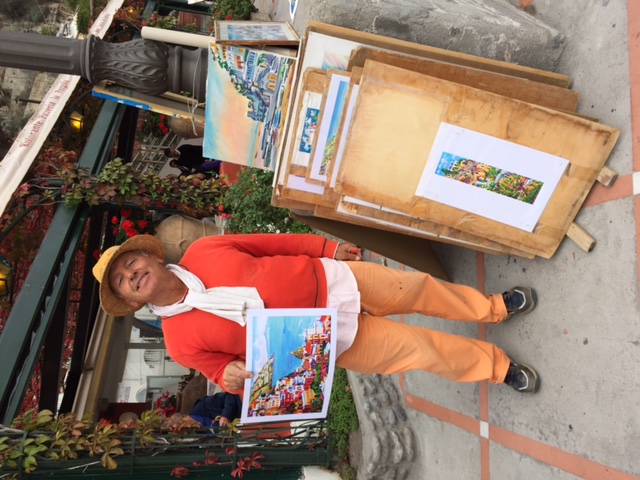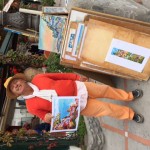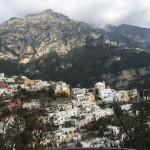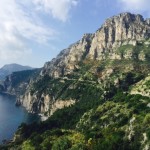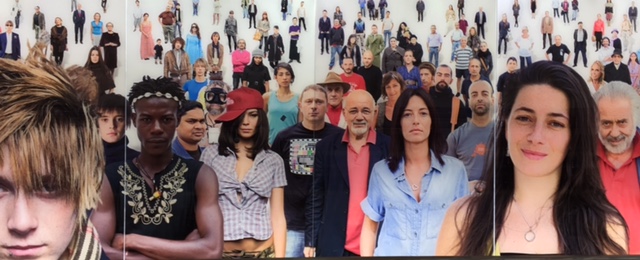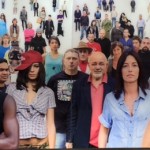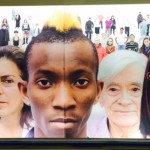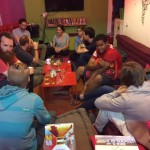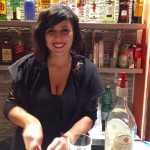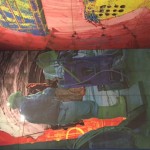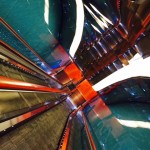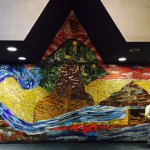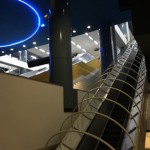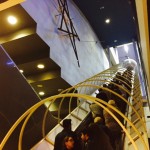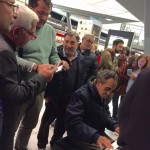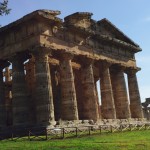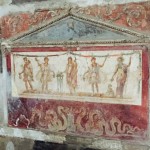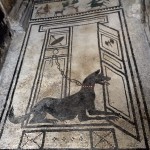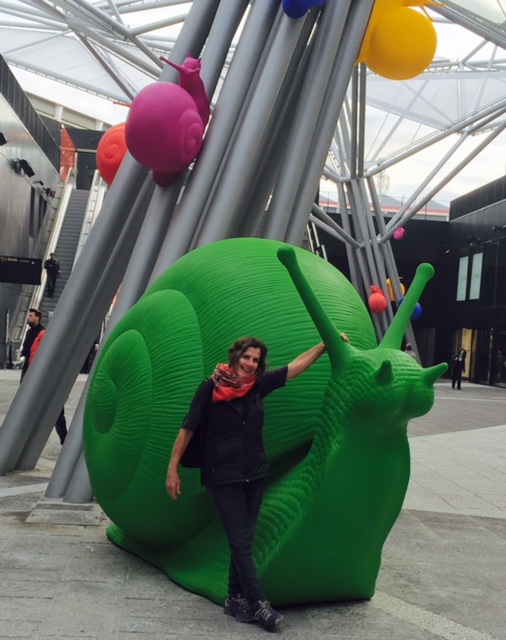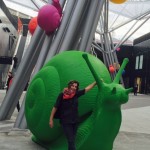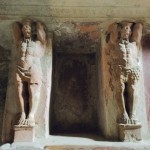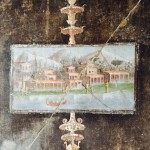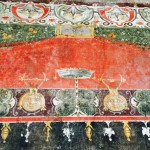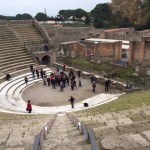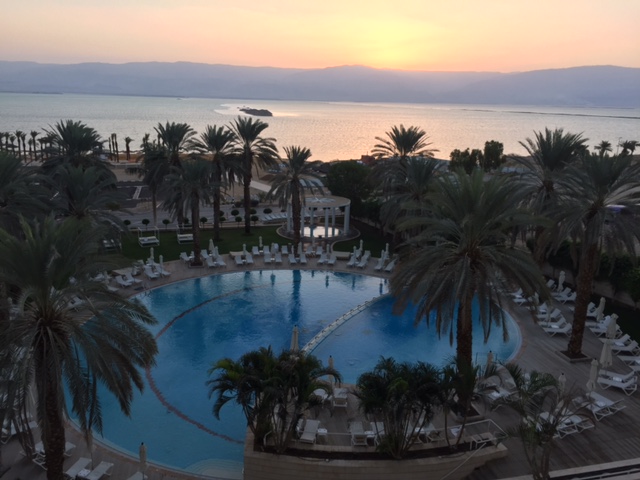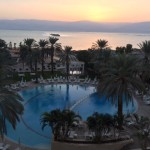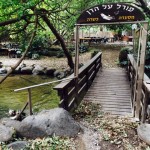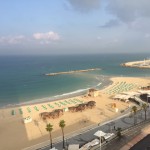TURKEY — a Two Week Tour–not nearly long enough!!!
DRIVING
Rented a Peugeot in Izmir so that I could see many sites not accessible easily by public transport. And what an experience!! Unlike Italy where the signage is infuriatingly useless, the signs in Turkey are easy to follow and available in plenty of time before a turn. Plus the roads are good. So what’s the problem? Well, picture a four lane highway between villages with a 90 km speed limit. Sweet. But then you share the road with
1. Bicycles
2. Motorbikes puttering along about 20 kph
3. An occasional horse-drawn cart–no lie
4. Drivers who absolutely LOVE to tailgate
5. Pedestrians who skitter across the road in bold hopes of survival
6. Impatient drivers who pass on the right if their tailgating hasn’t worked.
7. Cars doing a steady 40 km per hour in the middle or fast lane blithely unaware of anyone else on the road
And my favorite–
8. Cars that fly by doing at least 140km an hour, horns honking and lights flashing in ecstatic abandon.
Amazingly though I never came even close to danger or to an accident the whole four days I was on the road. The only thing that challenged me was the very narrow nearly vertical cobbled street out of Sirince that devolved into a jumble of broken boulders and two foot deep holes left by their displacement. I realized I wasn’t on my way to the local church, was able to manage a 180 and carefully bumped my way back into town, where shops and people abounded just as they do in Beyoglu in Istanbul where I usually stay. It’s amazing how the literally hundreds of people walk all over the streets and somehow cars and motorbikes run right through the masses with no mishaps. A few scares maybe.
WALKING actually is the modus operandi of most folks in Turkey so day and night all the streets seem jammed with pedestrians–slow doodlebugs wandering in and out of shops, gangs of young men all dark haired with beards and mustaches, all handsome, all looking very much alike, swaggering down the center of the one lane two way cobbled streets, families with strollers, peddlers with churro and pretzel carts, women in Muslim scarves and long skirts.
People crowd every kind of street from 19th century very steep staired sidewalk streets to the broad new Istabal–a 4 kilometer pedestrian street of posh shops and thousands of shoppers–teenagers, women in chadors, romantic couples, families, guys with cool London haircuts (shaved sides, bouffant tops), the odd illegal motor bike–streaming people all day and past midnightevery day of the week.
As you walk the streets you begin to see tradition everywhere. The tea shops, the candy and spice stores, the pomegranate juice bars all look the same as do the pretzel and chestnut carts with their red and white awnings, and the shoeshine stands with big surrounds of stepped brass decorated with a mountain of spheres on each side of the platform for one’s foot. You are a sultan for sure perched on a Turkish rug covered high chair before such elaborate stands. And most restaurants have a rainbow array of shredded fresh vegetables, assorted hot dishes and fresh paper thin bread cooked on a 30″ diameter hot grill by a woman in a chador kneading stretching and rolling fresh dough into pizza-like circles and cooking them with feta or spinach or mushrooms– your pleasure.
EATING
Start on the street where for about a dollar you can find fresh squeezed pomegranate juice–mmmm–tasty zesty healthy. Add a kind of New York pretzel flavored with poppy seeds; roasted corn and the favorite flavor of the week, roasted chestnuts served fresh, hot and artfully arranged in pyramids or rosette patterns or pretty lines like petit fours on circus style carts.
In “Turkish Delight” shops, a rainbow of jellies called “lokum” in Turkish, come in flavors from kiwi to date, watermelon to pistachio and baklava of every shape beckon even more enticingly. Here too are binfulls of spices, dried apricots, candied pineapple, scrumptious color everywhere even on the carpeted walls and glass lamps suspended in myriads from the ceiling.
Tea shops with low tables and stools are always filled with older men and newer trendy cafes in the old Beyoglu neighborhood serve tea and coffee in traditional ways: tea comes in an hour-glass shaped glass served on a saucer. Turkish coffee, thick as molasses, is served in a small cup on a wooden platter with lokum in a fluted pastry cup and a glass of water.
If you are lucky a Turkish friend may read the coffee slurry that sticks to your cup if you do an elaborate ritual of sloshing it around and turning it upside down in your saucer. When my coffee grounds were read there was an unmistakeable image of a tree left in my cup telling me I was to have wealth coming my way soon. But a couple of lumps in the grounds warned me about evil eyes ready to prey upon me. Whew
Breakfast here, as in Israel and Jordan, always includes tomatoes, cucumbers and cheese plus bread, jam, maybe eggs, usually yoghurt and any other assortment of healthy fare–the better the hostel or hotel the more the breakfast which could include anything from fava beans to halvah, pancakes to frittatas. I love it all and find myself craving tomatoes and cucumbers at every meal thanks to months over here.
CATS are everywhere and every breed. They patrol the streets like Lotharios, curl up three to a chair in the posh museum shop, slink around your legs as you eat, hang asleep on the heater vent at our hostel and leap up to swipe a half loaf of bread right off my plate with a single claw and an attitude of privilege. They are usually friendly enough, accepting human fondling with a measure of grace and endurance if not pleasure. But no matter where you are –from the holiest of sites like Hagia Sophia to the cobbled gutter –there will be cats–tabbies, Tuxedos, or scrambled mixes–and I’m delighted by their glorious and stealthy presence.
Oh and of course I came here to see the sites…
BEST ADVENTURES
In ISTANBUL
Visiting the Asian side to see the
three story high murals in the
YELDEGIRIMENI district-
surreal robots; military vehicles
cramming the land and being either
purged out of or sucked into a
space ship; disjointed women paddling
a boat filled with teddy bears and
heaps of broken toys and animal skeletons
“Resistencia” stenciled across a poignant
image of a Muslim woman. All the
murals were professional in quality,
and covertly political.
Discovering the TOMBS of the SULTANS
right next to Hagia Sophia but not
mentioned in my guide book
Such lovely tile work outside and in!
as if carpets were facing the entry
and elegant domes were poised over
somber groups of coffins
each in the form of a simple house,
each with a white knotted form on top
and each covered in green–because
the Quran says that people who
abide in paradise wear green.
Marveling at the opulence of the HAREM in
TOPKAPI palace. The flowery tile
patterns, the lovely copper fireplaces,
the elaborate fountains, the pavilions–
domed, stained glass windowed, golden,
the over the top Baroque magnificence
is indescribable and intoxicating. And I
was thrilled to see sacred relics of the
Prophet as well as emeralds and
diamonds displayed in abundance in the
Treasury.
Visiting MOSQUES, humble to huge, each
carpeted, filled with tile decoration,
silent, a sense of the presence of God.
I was drawn to them by the call to
prayer that fills Istanbul with
compelling chants five times a day.
And in the HINTERLANDS:
PRIENE–a Roman city on a hill overgrown with grasses and pines, absolutely isolate and abandoned–here was a lovely small theater, a square bouleterion (council chamber), and a few marble columns from a temple to Athena that stood eloquently against a stormy sky and steep granitic cliffs. Ah what a delight to be there alone with the ancient stones.
PERGAMUM –offered me another day alone with a Greco-Roman city because the day I went was cold and stormy and filled with bursts of rain and threatening thunder. This city was far grander than Priene; its Acropolis rivals Athens yet it is not often visited. It has a huge theater clinging precipitously to the edge of a steep slope, many cult temples and a 1500 square meter house with glorious floors with portraits and lions and leopards in mosaic tesserae. A huge temple to Emperor Trajan stands on the top of the mountain site with many columns intact and supported by a three story complexly engineered terrace. I wandered among the ruins for hours finding treasures like a bit of dressed marble and a piece of a red painted wall and the views were stunning. I’m ready to sign up to excavate next summer!!
Another treasure in BERGAMA (the village name today) is the remains of the Temple to the Egyptian Gods– a tall domed tower and high walls in the process of restoration. The roofs were originally supported by 28 foot high caryatid columns that were made up of a God and a Goddess back to back and sculpted in sections with different colored marbles. The one restored figure was of Sekmet, my favorite Egyptian Goddess–a lion headed power goddess.
CAPPADOCIA is one of my Seven Wonders for sure–and although I’d heard about it, the place still amazed and thrilled me–it’s a moonscape developed by wind and floods eroding the ancient lava flows of three now dormant volcanoes and I went on my first hot air balloon ride to see it at dawn –“Fairy castles” these formations are called–tall white skinny spindly peaks of sandstone many capped by dark basalt and many many of them have both natural and man made caves within them that people have lived in for generations. Being here is like magically climbing into a children’s book of dreams, complete with homes for trolls and Minions.
What surprised me the most was the exquisite Early Christian cave churches clustered all over the hills and canyons of Cappadocia. Some of churches were densely packed together, but each was really the church for a small monastery, each built into a mini mountain and each included not only a perfectly carved domed or barrel vaulted church but also stone rectory tables, kitchens, wineries, storerooms and monastic bedrooms.
So 1500 years ago we have these monks carving perfect classical columns, perfect arches and vaults and sweet little niches into the rock and then painting them with absolutely gorgeous Biblical scenes with designs and figures on every square inch of the interior spaces. And these churches are not only clustered in the main town of the region–Goreme–but they are scattered all over the hills and up the perpendicular walls of the gloriously beautiful Ihlara Canyon filled with Autumnal yellowing trees, intense green grass and a fast running clear water river.
Here in Cappadocia too are underground cities dating far back to Hittite times (1600 BC) and we climbed down to the 7th or 8th city below the surface to find a rudimentary Christian church with arches and columns and a cemetery.
Now that I’ve started to see the wonders of Turkey I can’t wait to return. There are so many places waiting for a visit–like Gobekli Tepe, the oldest ritual site in the world–and Catalhoyuk, the world’s first city and Hattusha, the Hittite capital.the ruins at Aphrodesias..and …..and….
NAPOLI NAPOLI MAGICO NAPOLI
Just two hours train ride south of Rome but worlds apart, Naples was a five day wonder for me starting with the Hostel of the Sun, a gathering place for many nations–people from Brasil, Poland, Canada, Israel, Italy, the U.K., even a Roma Druid sat around on pillows in the evenings and shared in the Aperitif Night (lots of free hors d’oevres) and in the free dinner. Energy here was surely created by Marica–a beautiful dark eyed sexy girl whose smile laughter and joy welcomed everybody.
The Centro Historico then offered my first surprise. Street after cobble stoned street still called by their Roman names–Decumanus–was jammed with families strolling by an endless number of shops and stalls selling miniature terra cotta sculptures. Originally a Neopolitan tradition of craftsmen making figures for the Christmas crèche the figures now depict every kind of life. Old ceramic storage jars and found tree trunks now provide stages for amazing scenes complete with flickering lights and moving figures. A rollicking bunch of rotund peasants dive rapaciously into mountains of food; a butcher chops up a side of pork, hind quarters of lamb hanging behind him and heaps of meat stacked on the counter before him; a baker throws pizza dough in the air while a seamstress bends carefully over her sewing machine.
Many of the artists sit in their shops molding clay and building vignettes. They proudly tell you how many generations of their men have been making these figurines. Literally thousands are on offer in every shop and the tiny baskets of fruit, the Marys, the Baby Jesuses nestled in straw in glass Christmas ornaments, the lambs, the tables and chairs, the zucchini and the bananas, every accoutrement of life are joined in some shops by hordes of Santas, crews of Punchinellos in white dress and black masks, and the strangest of good luck creatures–a gross wart-faced old man in a top hat covered in garlic and phallic red peppers. His belly bursting the buttons on his rag tag shirt, he swills a pint of beer and laughs his blackened and tooth missing grin.
Above the thronging masses LEDs light up line drawings of shepherds with lambs, herders with camels, water-bearers, and madonnas while in the center of the district larger than life size line sculptures of Mary, Joseph, the Wise Men and lambs and donkeys surround the Christ Child–just lovely.
Another magical experience in Naples is encountering so many fine antiquities. The Nazionale Museu has the gigantic Hercules and many other sculptures from the Baths of Caracalla; hundreds of mythological wall paintings from Pompeii; stunningly detailed mosaic floors and hundreds of sculptures, full round, in relief and as portraiture. Interesting that only Venus/Aphrodite is nude–all other women seem to be covered up like Vestal Virgins while the men strut and battle, compete and recline all in the nude.
Of course I went into the field to see the miraculously preserved POMPEII and HERCULANEUM, each city destroyed in moments when Vesuvius erupted in 79 BC.
Pompeii is huge and filled with everything a Roman town should have–baths, theaters, an amphitheater, villas, a Forum, a Basilica (law court whose structure lent itself to Christians who later transformed them into churches). I loved seeing its water system, its column construction, its beautiful baths, its lovely floor mosaics and wall paintings (Dionysos reclining nearly drunk accompanied by satyrs and his sleazy old mentor Silenus and served by his Bacchai all painted in brilliant realism on intense cadmium red grounds) although I found Herculaneum easier to negotiate.
The surprise around Naples for me though was PAESTUM– a Greek and Roman ruin south of Naples. Spread out in a grassy plain, nearly empty of visitors, it had a huge Forum, a swimming pool with water slides inside of a fancy villa, two circular meeting sites that resembled theaters but were governmental gathering places–one Greek and one Roman. But what was astonishing and so very beautiful were the three Greek temples on site, each with massive Doric columns and each intact and standing many stories high in monumental glory.
On a less grand scale but another wonderful magical surprise was Linea Uno of the Naples Metro. It’s a new line and millions may have funded the contemporary art that fills several of the new stations, each one of which has its own unique paving, lighting system, wall designs, even escalator siding. I spent hours traveling up and down escalators (the line is deep deep into the bowels of Naples and has initiated many archeological digs ), in and out of entrances to find all the art hidden in every nook and cranny of six stations.
I found lenticular 3-D pink and lime green wall images wherein organic and strange digitally generated objects moved as one walked by; saw a row of burned out Fiats between platforms in another station; found several beautiful abstract mosaic paintings, a photomontage of working men, and a 3-d sculptural painting in a station with some serious portraits of screaming women looming out of a completely black platform way off in a corner of a station. In another there were two block-long photomontages of thousands of Neopolitanos of all ages, shapes and ethnicities that was extremely moving.
My favorite station was Toledo where William Kentridge created a block long mural in black white and gray tesserae documenting the history of Naples with its musicians, scientists, heroes and Patron Saint Gennaro. In the nether regions of the station there is a corridor of moving water en video and farther down are curvilinear walls and ceilings that are tiled in blues, greens, and violets with a skylight that rises to the surface like a mystical tunnel up from the deep sea up to the sky .
A day in Sorrento and Positano, both built on astoundingly perpendicular cliffs, the roads indeed cantilevered over the Mediterranean, were spectacular as well. I left the Hostel with kisses and hugs and came upon an older man playing piano in the train station surrounded by loudly and joyously singing cohorts grouped around him. Magic…no other word for Napoli.
ISRAEL, the Holy Land, Land of Many Civilisations
As I write I am hearing the waves of the Sea of Galilee breaking on the rocky shores beneath my hotel room in Tiberius, a city in the north of Israel which I am visiting with an Archeological Tour group. All of this country seems to have the Bible writing its history; at least I find myself hearing names and places I heard as a child in Methodist Sunday School…Nazareth is just over that hill; Abraham prepares to sacrifice Isaac in this mosaic; Jesus was said to have been crucified on the rock inside the Holy Sepulchre Church in Jerusalem; these caves in Qumran held the Dead Sea Scrolls that were discovered in the 50s but jealously held to the breasts of scholars until 1994 when an “illegal” copy was released on the Internet.
Fascinating to witness history in the flesh, or rather, in the rocks that we scramble over, under, and over again all day every day we have been here.
Jerusalem of course supplied many days of exploration—from the many ruined homes of the City of David, to climbing into underground cisterns, ancient home foundations, ritual baths and the foundations of the Western Wall that lie many meters below the present Wall, because Jerusalem, like nearly every Tel in Israel, is a city built on top of many other cities—Roman, Bronze Age, Iron Age, Crusader, Muslim.
What I imagine most intensely from our travels around Jerusalem, though, is the ancient Roman Cardo (the main North South street of all Roman towns). Here we walked on real Roman stone roads grooved by the carts that once frequented this market street and bordered by elegant Corinthian columns that once lined the porticos to shops in the time of Jesus.
Beyond the restored archeological Cardo a live Cardo thrives—it is an Arab market like souks in Morocco selling rainbows of scarfs, spices, fresh pomegranate and carrot juice, jewelry and harem pants, color everywhere. I was entranced by Bedouin coffee pots and haggled my way into buying two lovely examples. Are they authentic? Who knows? I found myself sequestered amidst piles of carpets and velvet kaftans, having Turkish coffee and looking at supposedly antique earrings and being hard-selled into a purchase I was unsure of. When the vendor failed to persuade me he harried me down the cobblestones.
Some of these shops are under makeshift covers, cardboard, reused corrugated panels and line a Cardo that at this point is barely wide enough for three people not to mention the hand carts that are run down the paths. In some places above the market, we walked on the roofs that housed yeshivas (rabbinical schools) and a warren of homes—some are Muslim apartments often with the red and green spray painted designs that signify that the family has gone on the Hajj to Mecca. And many rooms and spaces are the homes of conservative Hasidic Jewish families.
Jerusalem is filled with Hasidic ultra orthodox scholars who have huge families (10-15 children) and who are fully supported by the State. Their work is to study the Hebrew texts and to keep Judaism alive…a task the State deemed absolutely worthy after the Holocaust. Now, though, these families have multiplied and State sponsorship has become a political controversy.
Meanwhile Jerusalem seems filled with Hasidic men in big beards, traditional wringlets at the ears, big black hats worn well back on the head. They are formally dressed in suits under which the fringes of their prayer shawls hang. The streets are filled too with men wearing yamulkas. There are far fewer women than men and many women carry children and wear traditional head scarfs.
Of course the city has many Muslims as well although we have not spent much time in the Islamic Quarter; we have, though, been privileged to go up to see the beautiful Islamic tiled octagonal structure known as the Dome of the Rock, a holy site for Muslims, Jews and Christians alike as it is believed to be where Mohammed ascended to heaven on his Night Journey, where Abraham sacrificed Isaac and where the Temple of Solomon (First Temple of the Jews) stood.
What astonished me is that beyond the ancient city walls Jerusalem is a very large modern city built on many many hills—Somehow I pictured it as a tiny ancient village.
Once into the countryside Israel is a dry dry desert, a land of olive trees, wild pomegranates, vineyards and badlands. It is starkly beautiful and barren, a place where water is scarce and precious, a place so desolate one wonders why it is so desirable. We learn it is because it lies in the center of all the trade routes between Africa and Mesopotamia, between the Mediterranean and the Persian Gulf so whomever controls this slender strip of desert more or less controls the Middle East.
As we explore archeological sites, we are constantly bombarded by the fact that war war war has been the life of this land, no matter who has been in control and keeping track of all the tribes and rulers is mind-boggling.
Even the Church of the Holy Sepulchre bears witness to the prevalence of warh as it is a warren of chapels and altars that many different Christian sects squabble over and refuse to let each other step into. For example Greek Orthodox and Franciscan Catholics claim half of the main aisle of the main church. Meanwhile the often discriminated against Ethiopians are exiled to the roof.
It is war, of course, that builds fortresses, city walls, siege ramps and other defensive or offensive structures all over Isreal and all of the ancient world for that matter. The layout of the Roman castrum–a military base–is used throughout the Roman Empire As the basic grid layout of all Roman cities.
Visits in the south and north of Israel have included many Roman sites, filled with exquisite floor mosaics, some geometric, some with elaborate scenes like Dionysian rites, Amazon battles, and the people, fishes, Nilometer and waves of the Nile. At Bet She’an we visited a fine example of a classical Roman city complete with a theater, a forum, an elaborate bath house, a cult area (for Mithras?), a Cardo lined with Corinthian columns and a high hill (a Tel in fact) where a Temple to Zeus stood and where an earlier Egyptian temple still stands in ruins, its column drums inscribed in hieroglyphs.
There are Jewish homes and villas that have mosaics as well and a synagogue in Zippori that has the most amazing calendar mosaic with zodiac figures, the four seasons, and Helios the Sun God riding his chariot in the center medallion.
I have learned to look for evidence of the Jewish presence here in the Roman days—mitzveh ritual baths, menorahs, and images of the “Holy of Holies,” a shell roofed niche where the Torah (the first five books of the Old Testament=the sacred text of the Hebrews) is kept behind a curtain.
Two sites are amazing—Herodium where Herod build a private three level residence and fortress on the prow of a cliff and Masada, a large fortress again on a steep cliff faced promontory that Herod built and that Hebrew zealots later used as a refuge in one of their revolts against the Romans.
My favorite Roman city though is Caesarea. It lies on the splendid aquamarine waters of the Mediterranean and is a port that Herod sited on a shore with no natural landing place. He and his amazing engineers created huge breakwaters by floating barges filled with concrete out from land and then adding more concrete to sink them and thus create a massive and entirely man-made harbor. Then he built palaces on the shore, the largest of which he equipped with a large sweet water swimming pool within a Corinthian colonnade , a basilica, temples, houses, a chariot racing “circus”, a theater, mosaics everywhere and an elegant aqueduct.
Besides studying ruins and learning about the complex history of Israel Palestine and Judea, I’ve eaten trout fresh from the clearest stream I’ve ever seen, been into the warm and beautiful Mediterranean in TelAviv and listened to the waves of the Sea of Galilee at a restaurant serving fresh tilapia (called St Peter’s fish after the Biblical story wherein Jesus performs a miracle by having His deciple Peter catch a fish in whose mouth would be a coin to pay a tax). But the strangest water experience was swimming or rather bobbing around crazily like an inflatable rubber duckie in the super salty Dead Sea.
My last day in Israel I spent riding a bicycle through a wild rain storm and then ending in a gloriously sunny afternoon. I rode the entire length of Tel Aviv’s beach front up to the Yarkon River park and then east for miles until I came upon a most magical sight: right in the grass by the bike trail was a big healthy jackal !!! I was astonished, thrilled to see such a beautiful wild creature within the city limits. I rode on, then doubled back hoping to see him again and was rewarded by four or five more jackals bounding through the reeds by the river.
What a splendid finale to my trip to Israel. I felt privileged and very blessed.
